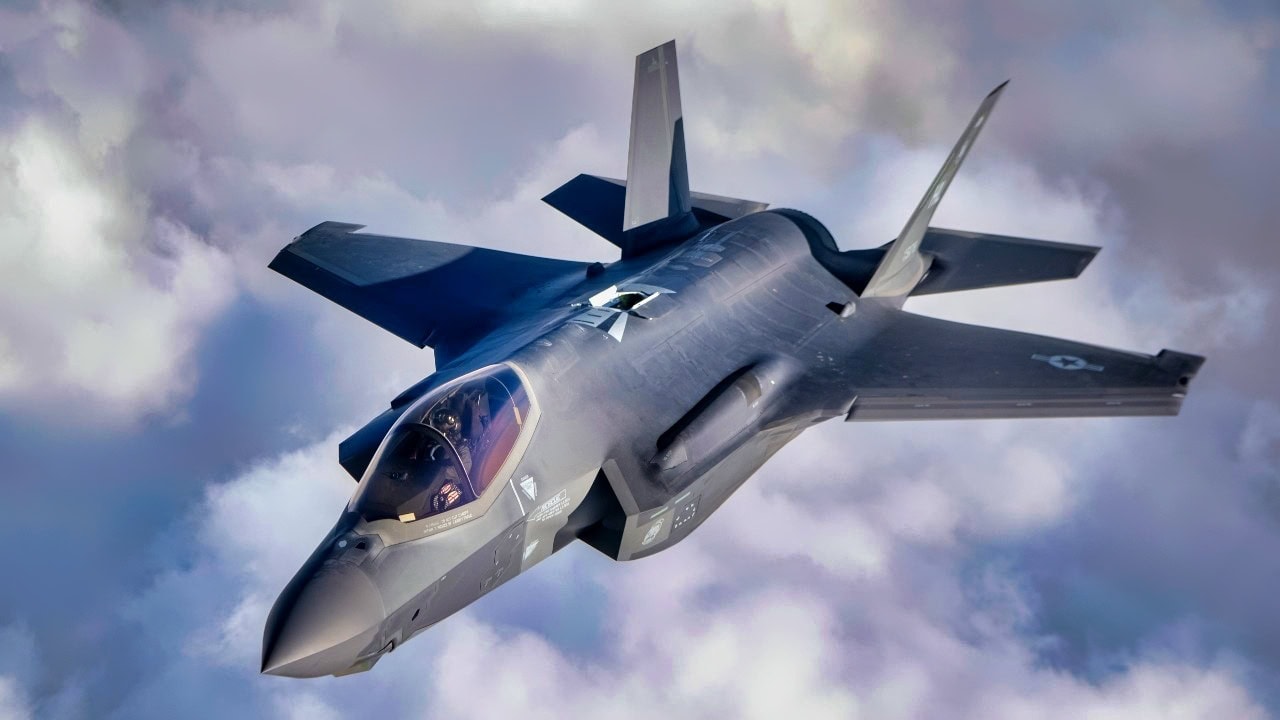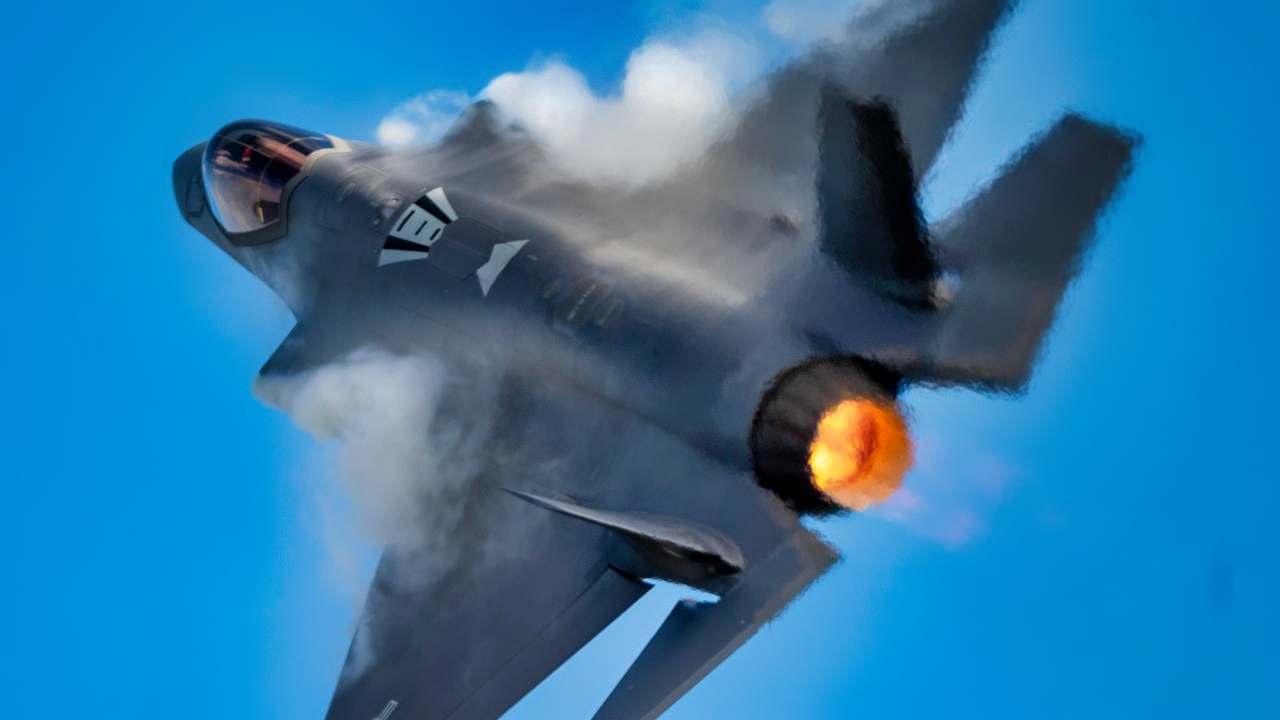Key Points: Prime Minister Mark Carney’s review of Canada’s F-35 jet purchase exemplifies Ottawa’s chronic failure to take defense seriously, according to this analysis.
-The decision reignites a decade-long procurement debacle and signals continued unseriousness amid growing threats from Russia and China, particularly in the Arctic, and waning allied patience. The piece argues this pattern extends to naval and submarine acquisitions, hampered by delays and indecision.
-Canada’s reliance on outdated “middle power” illusions and persistent underfunding below NATO targets leaves its military unprepared. The author contends Carney must urgently reverse course, invest in hard power, and fix procurement, or risk Canada’s security.
Canada Needs the F-35…
In a move that defies strategic logic and undermines national security, Prime Minister Mark Carney has ordered a review of Canada’s commitment to purchase 88 F-35 fighter jets from Lockheed Martin. This decision doesn’t just threaten to upend years of planning and investment – on a deeper level it reflects the fact that Ottawa is deeply unserious about defense.
At a time when Canada’s military readiness is already seriously deficient, reopening this seemingly endless debate is reckless.
F-35 Fight in Canada Makes No Sense
The F-35 debacle isn’t just about fighter jets. It’s about Canada’s chronic inability to execute even the most basic defense acquisitions in a timely, competent, and strategic manner. What should have been a straightforward decision – procuring the world’s most advanced fighter aircraft to replace Canada’s ageing fleet of CF-18s – turned into a decade of partisan political theater, unnecessary cost overruns, and declining military capability.
Ottawa first joined the Joint Strike Fighter program – which ultimately led to the F-35 – as an early partner in the 1990s, gaining ground-floor access to a cutting edge combat aircraft program. In 2010, the Conservative government announced plans to buy 65 F-35s. But over the next several years those plans began to unravel amid political attacks, concerns over cost overruns, and shifting strategic priorities. Trudeau exploited that uncertainty in 2015, campaigning on scrapping the F-35 in favor of an “open competition” intended to find a cheaper alternative. That competition, however, quickly devolved into a slow-motion train wreck, culminating in the government’s embarrassing reversal in 2022 when it re-committed to purchasing the F-35 – this time 88 aircraft, at a higher cost, with a more prolonged acquisition timeline, and after having deprived the Royal Canadian Air Force of an essential capability for a decade.
Now Trudeau is gone, and Mark Carney is in charge. But the fundamental issue remains: Canada still doesn’t take its defense commitments seriously. The world isn’t waiting for Ottawa to get its act together. Russia continues to probe North American airspace and strengthen its Arctic foothold. China – a self-declared “near Arctic power” – is expanding its reach in the North Pacific and the Arctic, building a fleet that in the near future could pose a serious threat to Canadian security in the North Pacific and the Arctic. And Washington, once willing to tolerate Canada’s defense free-riding, is losing patience. This government, like those before it, faces a choice: either invest in serious military capability or accept that friends and foes alike will attempt to fill the vacuum.
The F-35 procurement should have been a turning point, an opportunity to step up and deploy a serious military capability. But if Carney’s call for a review of the program are any indication this will not be the case. And Canada’s allies are not going to put up with this. The United States, Australia, and the UK have all invested heavily in F-35 infrastructure, pilot training, and integration with next-generation battlefield networks. But, as Mark Carney’s call for yet another program review clearly indicates, Canada continues to dither. There is little indication that Ottawa is going to expedite the necessary upgrades to airbases or invest in the refueling and maintenance facilities needed to support a modern fifth-generation fighter fleet – especially in the Arctic.
The F-35 is just one part of the equation. The Royal Canadian Navy is in the middle of another drawn-out procurement nightmare, with plans to acquire 15 Canadian Surface Combatants (CSC) dragging on well into the 2040s. These ships are intended to replace the Halifax-class frigates, but delays and ballooning costs raise real questions about whether Canada will be able to sustain a credible naval presence in the North Atlantic and Pacific in the years ahead. If the air force’s painful modernization process is any indication, the navy’s future is just as uncertain.
Submarine procurement faces the same grim outlook. Ottawa’s decision to pursue up to 12 conventionally powered, under-ice-capable submarines is a welcome shift in policy, but execution remains the problem. The Victoria-class boats are already outdated, yet their replacements won’t arrive for at least another decade – if everything goes according to plan. If Canada fails to manage this acquisition properly, it risks finding itself without an operational submarine fleet, just as underwater threats in the Arctic are growing.
Recent policy announcements, such as Our North, Strong and Free: A Renewed Vision for Canada’s Defence, outline ambitious goals, but ambition means little without follow-through. Strengthening Arctic defense, improving surveillance capabilities, and modernizing the military sound good in press releases, but history suggests Ottawa’s execution will be plagued by indecision and delay. Without clear, sustained investment, these plans are little more than words on paper.
For decades, Canada has operated under the illusion that geography is a defense strategy. It assumed that being a North American nation, protected by oceans and a friendly superpower, meant that hard military investments weren’t necessary. But with the shift from the unipolarity of the post-Cold War era to this new era of multipolar great power competition that thinking is both anachronistic and dangerous. Russia’s Arctic militarization is happening now.
China’s naval buildup isn’t a hypothetical problem – it’s already shifting the balance of power in the Pacific. Even the United States, which has long covered for Canada’s military shortcomings, is signaling that it expects more from its allies.
The days of skating by on middle power delusions are over. Ottawa claims it prioritizes defense, yet every budget cycle tells a different story. Defense spending is below the NATO floor, procurement is slow, and force readiness continues to deteriorate. Canada’s allies see it for what it is: a nation unwilling to meet even the basic standards of military capability. That has consequences. Washington, London, and Brussels are reassessing commitments, and nations that don’t contribute meaningfully will find themselves excluded from key security decisions.
Carney has a choice. He can follow the well-worn path – vacilitating, deflecting, and offering vague promises – or he can recognize reality and act. That means serious, sustained investment in defense, not just recycled announcements. It means fixing a procurement system that turns every military purchase into an expensive, drawn-out disaster. It means taking Arctic security seriously, not just as a political soundbite, but as a real operational priority.
Canada can no longer pretend that defense is someone else’s responsibility.
Beyond the F-35, Canada’s broader military failures are glaring. Northern infrastructure is inadequate. Arctic surveillance capabilities are nowhere near what they need to be. Icebreakers are aging, and critical airstrips remain unimproved. Even the logistics required for sustained operations in the North – fuel depots, supply lines, operational bases – are insufficient. These aren’t theoretical concerns. They’re vulnerabilities that adversaries can and will exploit if Canada continues to do nothing.
The air force isn’t just dealing with outdated planes; it’s struggling to keep enough trained pilots in the cockpit. Military recruitment and retention have become a crisis. Even with a modern fighter jet, an air force without enough pilots, maintenance crews, and operational infrastructure is an air force in name only. Buying a state-of-the-art jet doesn’t fix decades of neglect in training and force readiness.
Fighter Jet Debates
Then there’s the larger issue: Canada’s grand strategy – if it can even be called that. For years, Canadian foreign policy has been based on the belief that it is an indispensable “middle power” – one committed to peacekeeping and the exercise of soft power. But the world has changed, and, as the Russian invasion of Ukraine starkly reflects, we are now in an era where hard power matters more than ever. Other nations understand this.

A U.S. Air Force F-35 Lightning II flies over the U.S. Central Command area of responsibility, July 15, 2020. The F-35 Lightning II is an agile, versatile, high-performance, multirole fighter that combines stealth, sensor fusion and unprecedented situational awareness. (U.S. Air Force photo by Airman 1st Class Duncan C. Bevan)
Australia, a country similar to Canada in many ways, has embraced military modernization and pursued closer security ties with allies. The UK, despite economic constraints, prioritizes naval power and force projection. Canada, meanwhile, is still pretending it can maintain global influence without the hard power necessary both to defend its interests and to buy a seat at the international security table.
Canada Has Bigger Problems
Mark Carney must decide if he will be the prime minister who finally takes Canadian hard power seriously and takes steps to build a military suited to the challenges of the geopolitical world we actually live in rather than the half-imagined, half-remembered post-Cold War world.
Unfortunately, the latest phase of the F-35 debacle powerfully suggests quite the opposite: that Carney is simply not the man for the job – and that if he is elected in the upcoming Canadian federal election it will be the same old, same old defense policy and procurement process, with all the pathologies catalogued above.
F-35: A Story in Photos
Andrew Latham is a non-resident fellow at Defense Priorities and a professor of international relations and political theory at Macalester College in Saint Paul, MN. Andrew is now a Contributing Editor to 19FortyFive, where he writes a daily column. You can follow him on X: @aakatham.

